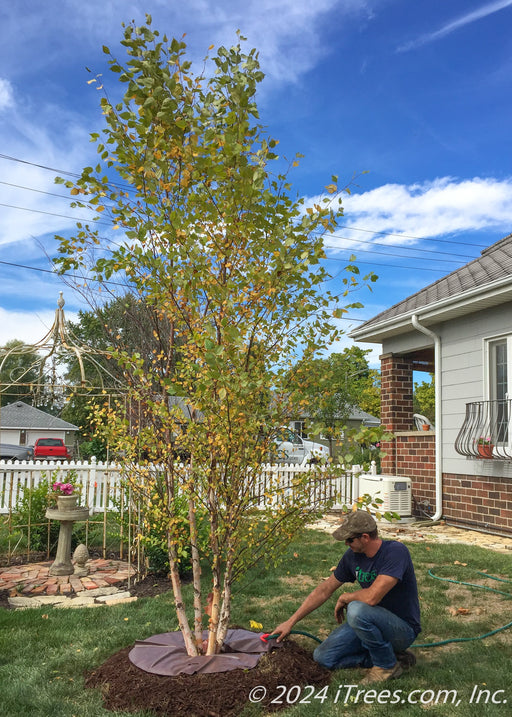Why it rocks:
Amur Flame Maple is a true hidden treasure that is quickly winning over homeowners eager to enhance the beauty and charm of their landscapes! In spring, this tree delights with fragrant clusters of creamy-white flowers, filling the air with a pleasing aroma that engages the senses. Its striking red-winged samaras provide an extra touch of ornamental beauty. But the enchantment doesn't end there! As autumn arrives, prepare to be amazed as its rounded canopy explodes into a stunning display of deep red-orange leaves, infusing your landscape with vibrant hues. The tree's upright, spreading branches create an elegant silhouette, while the intricate texture of its foliage adds depth and personality to your outdoor area. This tree is a standout feature that transforms ordinary yards into breathtaking landscapes. Embrace the charm of the Amur Flame Maple and allow it to elevate your outdoor space!
Where to put it:
Amur Flame Maple is an excellent choice for privacy and as a decorative accent. Consider planting it in a location where its stunning appearance can be appreciated throughout the seasons. This tree can be found in both single-trunk and multi-stem clump forms. In the multi-stem clump form, it serves as an effective privacy hedge, making it ideal for planting along property lines, for screening, or near patios and walkways. Its compact size makes it perfect for areas with limited space, such as landscape beds and beneath power lines. Please keep in mind its low branches may obstruct views in front of it. Amur Flame Maple looks especially appealing in odd-numbered groups. Be sure to plant this tree at least 8-10 feet away from buildings.
What it needs:
Amur Flame Maple is among the hardiest ornamental trees you can find. This tree thrives in full sunlight and well-drained locations, yet it can adapt to nearly any growing conditions in the Chicagoland area. To ensure a strong root system, please adhere to our tree care guidelines during the initial growing seasons.



















